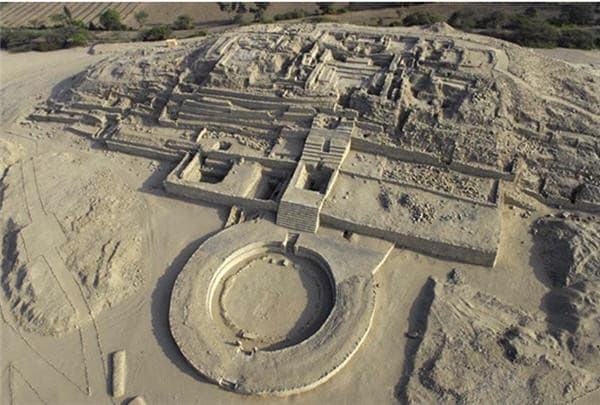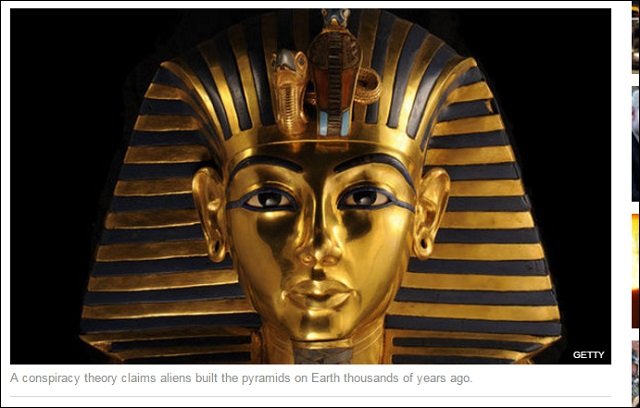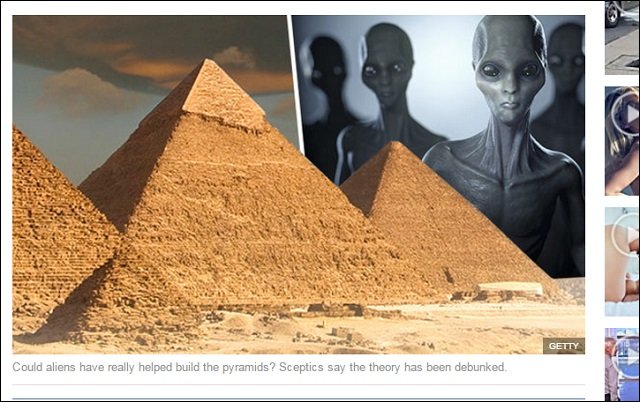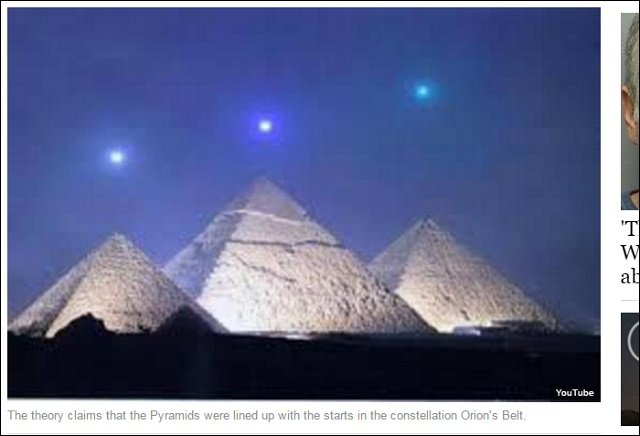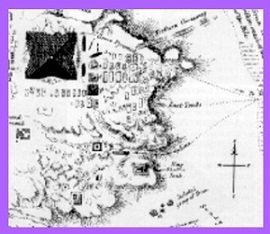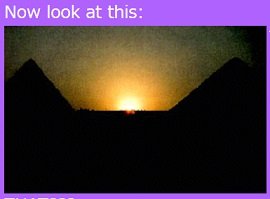Listen to the Oldest Song in the World: A Sumerian Hymn Written 3,400 Years Ago
http://www.openculture.com/2014/07/the-oldest-song-in-the-world.html
In the early 1950s, archaeologists unearthed several clay tablets from the 14th century B.C.E.. Found, WFMU tells us, “in the ancient Syrian city of Ugarit,” these tablets “contained cuneiform signs in the hurrian language,” which turned out to be the oldest known piece of music ever discovered, a 3,400 year-old cult hymn. Anne Draffkorn Kilmer, professor of Assyriology at the University of California, produced the interpretation above in 1972. (She describes how she arrived at the musical notation—in some technical detail—in this interview.) Since her initial publications in the 60s on the ancient Sumerian tablets and the musical theory found within, other scholars of the ancient world have published their own versions.
The piece, writes Richard Fink in a 1988 Archeologia Musicalis article, confirms a theory that “the 7-note diatonic scale as well as harmony existed 3,400 years ago.” This, Fink tells us, “flies in the face of most musicologist’s views that ancient harmony was virtually non-existent (or even impossible) and the scale only about as old as the Ancient Greeks.” Kilmer’s colleague Richard Crocker claims that the discovery “revolutionized the whole concept of the origin of western music.” So, academic debates aside, what does the oldest song in the world sound like? Listen to a midi version below and hear it for yourself. Doubtless, the midi keyboard was not the Sumerians instrument of choice, but it suffices to give us a sense of this strange composition, though the rhythm of the piece is only a guess.
Kilmer and Crocker published an audio book on vinyl (now on CD) called Sounds From Silence in which they narrate information about ancient Near Eastern music, and, in an accompanying booklet, present photographs and translations of the tablets from which the song above comes. They also give listeners an interpretation of the song, titled “A Hurrian Cult Song from Ancient Ugarit,” performed on a lyre, an instrument likely much closer to what the song’s first audiences heard. Unfortunately, for that version, you’ll have to make a purchase, but you can hear a different lyre interpretation of the song by Michael Levy below, as transcribed by its original discoverer Dr. Richard Dumbrill.
Sumerian slumber ethnicity [Hinano This study]
Http://www.asyura2.com/0403/bd34/msg/896.html
(Google tlanslation)
I will post as a document.
If so, we are not declaring.
~
Http://www4.justnet.ne.jp/~hinomoto/kodai/sumeru.htm
Sumerian slumber
Relationship between Omoto and Sumer
The oldest civilization in human history is said to be Mesopotamiya civilization, but the ethnic Sumeri who built that civilization seems to pronounce English pronunciation (Sumer is pronounced in English, in Latin it is pronounced "smel") It is different from the skeleton of the inhabitants, which is regarded as ethnic misconception, but suddenly disappeared after suddenly appearing, building various civilizations such as school, architecture, agriculture, industry and law, why is it?
Also, in the record, it seems that Sumeri people used the name "Ki En · Gi" to express themselves. This ki · en · gi seems to mean "the land of the Lord of the reed". It seems to have been called from such things as reefed areas, such as Tibaşh in Iraq etc.
That is the feeling that I do not understand the phrase "the mesosphere of Mesopotamiya, Mizuho country of Toyonobashira ..." in the spiritual story. Normally, "Moho country of Toyonobashihara" is the name of Japan described in mythology, so it is irresponsible that Mesopotamia is Mizuho country of Toyonobe, maybe it was called like that once Even if you do not know, I feel. However, the expression seems to be calling not only Mesopotamiya but also the whole world.
In the ancient history of Mr. Wang Nisaburo 's "Ancient World Tales", "Although the dynasty of the country stereotypes Ogami was originally Elllem in Turkey, Yamada Orochi, a fox of Kimo Nine Tails possessed by the Gods, It was also disturbed, finally being pushed into Japan north-east of the earth "is depicted.
The music of ancient Sumeri and Gagaku were the same
As can be seen from the anecdotes that Kuinui is deeply related to Omoto and Ms. Naoko to Mr. Wang Nisaburo every day, it seems that there is a deep link between Otomoto and the Kumiki family. It is said that the character "Kyunpei" which is the crest of the Kuki family is a roots with an ancient Sumerian character "Dingiru". I found an interesting story about that Kuinui family.
In 1960, ancient scores were discovered from clay versions discovered from Mesopotamia's capital city of Um, the capital city of Sumerian civilization, but Ms. Anne, D. Kilmer of the University of California, in a contemporary staff score Successful to reproduce, there was opportunity for critic Mr. Akira Iwata to dub the reproduced music to tape.
When I heard this ancient melody, I felt strangely nostalgic for the first time to listen.
... ... (...) ...
Perhaps it has something to do with Japanese old music. I thought so, I brought this tape and asked Kumon Munetaka, Kuma Mamiya Shinto shrine of Kii Peninsula. As soon as I thought that he began to listen to the tape, Kumaki Koji, who pleasantly greeted me, stopped, "I want you to let the priests listen to them," he said.
When listening to the melody of the tape for about 5 minutes, people of Kukii Shoji and Yuanyi were dissatisfied with the exclamation voice as "differently like traditional gagaku done at our company" differently.
- "Japan's Ancient Dynasty and the Mystery of Sumerian" / Akira Iwata: From the Japanese Literary Companies -
With the circumstances as described above, we will be waiting for a bit more research on the relationship between the Kumiki family and the exit house or the Sumerian people. Because it is thought that Kuinui family is from the military and is an alien group (Amamoto), it is considered to be a transgenic line. In addition, there are also many relics and the like that are thought to have lived in the Tamba and Tango neighborhoods where Taisho originated, as well as religious groups.
Moreover, in "Fuji Literature", it is said that the country Tsutenko came to Japan from Takateno, but since the ancient Takamagahara was in the vicinity of modern Iran and Iraq, if the "Sumerian people If it is true that it is coming to ", I think that this sign is surprised how Mr. Wang Xuzaburo is a big monster.
Sixteen chrysanthemum blossoms appearing in ancient Sumerian
Also, it is often said that "the sun-young ancestor theory", but the symbol of the Emperor "16 chrysanthemum pattern" is used as the emblem of Judea, but in fact other than related to Judea It is found everywhere in the former site of the ancient Sumerian civilization. In other words, regarding the 16th chrysanthemum pattern itself, the scheme of Judea = Japan is somewhat short-circuited.
According to the above Ira-Ira warfare, President Saddam Hussein made a press conference on the battle situation at the official residence of Baghdad, according to the above-mentioned Japanese super ancient dynasty and the mystery of Sumerian, It seems there was an episode.
A reporter in Europe saw that the design of the bracelet of the president is a sixteen chrysanthemum pattern "The emblem of the bracelet worn by the president, Excellency, is very similar to that of the Imperial family in Japan Is there anything related to Japan? "
Then, President Saddam Hussein seems to have answered like this.
"You should study more about the history of ancient Mesopotamia, this emblem is the emblem of the royal family that our ancestors used in the Sumerian dynasty when they built the world's oldest civilization"
Can you see the relationship between ancient Sumerian and Japanese customs?
If the Sumerian people had differentiated into the later Jewish people, Japan, there should be something in common.
1 Fishing method The fishing method carried out in the ancient Persian Gulf includes a ceremony (pentacle star mark: meaning of self-defense) and Dorman (meaning of a lattice mark of 4 rows and 3 sides: meaning of the goddess of the sea) in a headband or a spatula There is a custom to add a pattern, customs only seen in the Persian Gulf and Japan.
2 Stone statue In the early Sumerian dynasty, there is a stone statue that the king's left hand holds the queen's right hand on the ruins and the king's right hand is on the right shoulder of the queen, a statue with exactly the same motif (Dogenojin) seen in Japan .
3 Crest Crest Most of the crests used in Japan are identical to the patterns found from the ruins of Sumer.
4 16 chrysanthemum flower crest In Japan, there are many also seen from the ruins of Sumer (such as the bull's statue of Persepolis), which is used as a symbol of the emperor's family.
As mentioned above, you can list similarities between ancient Sumerian and Japanese from various places. In these designs etc. I think that it is possible to be a product of chance. If you are told that "Designing a chrysanthemum flower or a sun as a motif", it seems that it is not even wonderful that multiple people will coincidentally create similar designs.
However, in the categories related to myths, there is similarity, too, and I think that it is close to mere merely by accident. In ancient times, I think that it is more natural to see that some of the tribes of the Sumerians are transgenic lines that came to Japan, whether or not there was such an event.
~
Re: Sumerian slumber
Http://www.asyura2.com/0311/lunchbreak2/msg/1010.html
Poster Golden Cross Date and Time 04 April 2004 21: 02: 43: mfAWtS4GF8MpY
(Answer to: Re: What is civilization? Poster Golden Cross Date and Time April 05, 2004 16:21:19)
I had an interesting title on the Sumerians in the book I caught at a bit today and I picked it up.
A book published by Gakken, the author is Akira Iwata.
When reading Sumerian Latin, it seems to be called "smell", and it seems to be a slumber (Emperor (Sumeragi (wood = man)) Sumerami (real = female))). It seems that the chrysanthemum pattern of 16 valves is the key.
It was only nodding. interesting.
Related URL
Www4.justnet.ne.jp/~hinomoto/kodai/sumeru.htm
~ Akira Iwata's book
Http://www.junkudo.co.jp/view2.jsp?VIEW=author&ARGS=%8A%E2%93c%81%40%96%BE
・・・・・・・・・・・・・・・・・・
VIDEO
"Hurrian Hymn No. 6" (c.1400 B.C.E.) Ancient Mesopotamian Music Fragment
https://www.youtube.com/watch?v=9c-hmFN610g
2011.4.15「巫女舞」熊野本宮大社例大祭より。
https://www.youtube.com/watch?v=b4p0qwVFGgc
・・・・・・・・・・・・・・・・・・











